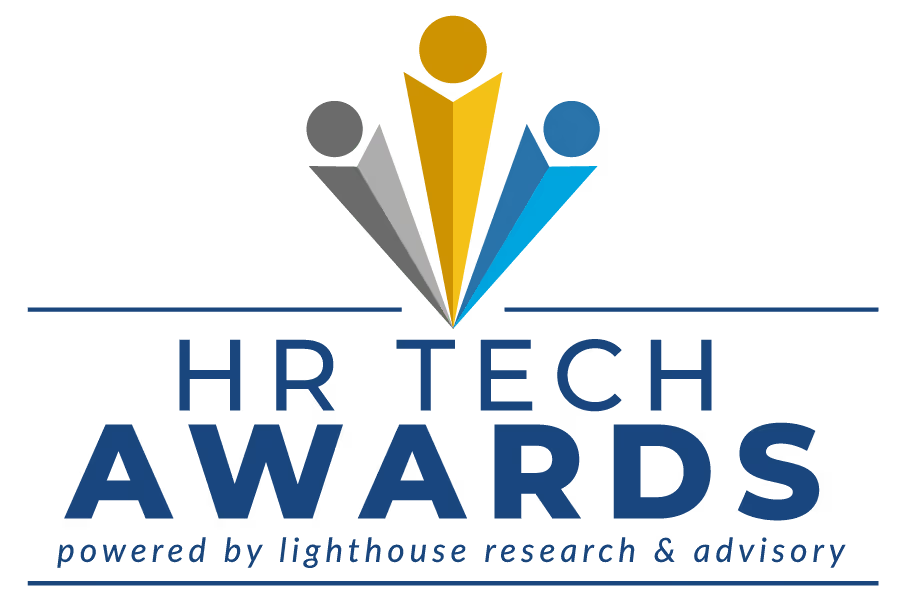
The idea of hiring candidates without having ever interviewed them is scary to most HR professionals. How could you ever properly assess if candidates are qualified? Besides, who wants to take the risk?
Yet the demand for new candidates is enormous within certain industries like customer service and sales for example. Interviewing for these positions globally never stops, and high turnover exacerbates the pressure on HR managers to meet these mass-volume hiring demands.
Ravi Kumar, President of Infosys, has to hire 500 new employees in three years for his Mississauga location, which breaks down to roughly:
- 167 new employees per year,
- 14 per month, and
- 3.5 per week.
Just think about how many candidates have to apply and how many interviews need to take place to give offers to 3-4 qualified candidates per week for years in a row! The pressure on an HR department to sustain this kind of growth can lead to less qualified staff filling available positions, high-turn over rates, decreased hiring performance, and increased hiring costs.
Different pre-hire technology has been created to help HR departments deal with high-volume needs, but most do not correlate hiring performance with the assessment method in place. As a result, confidence in assessment technology waivers, while others have found success in a completely different hiring model.
HiringBranch customers have all adopted a radically different way of operating, eliminating the interview process almost completely while increasing hiring performance, and we'll explore some of these cases below. With the No Interview Model already in use today, the promise of the no-interview model has flipped mass hiring traditions upside down. Let’s take a closer look at what the no-interview model is before diving into how it's reshaping talent acquisition in a big way.
The Definition of the No-Interview Model
The No-Interview Model is a hiring process that leverages skills-based assessments to evaluate both the language and soft skills of a candidate at scale, eliminating the need for an interview. The assessment needs to correlate to the actual hiring position for optimal results. The No-Interview Model eliminates costly and lengthy hiring processes, and can improve hiring performance with the right vendor.
In HiringBranch’s case, assessment results are powered by artificial intelligence, and candidates are scored on language, communication, employability, and 30+ soft skills. Rather than partaking in a lengthy interview process, the hiring manager can simply monitor their dashboard and send an offer out immediately to candidates who pass their position’s assessment, which is often customized. This streamlined mechanism for hiring is already in use today.
"The No-Interview Model is a hiring process that leverages skills-based assessments to evaluate both the language and soft skills of a candidate at scale, eliminating the need for an interview."
The risks of this method are apparent, so trust in the assessment provider and a migration plan are essential. Hiring managers need to be able to rely on the results of an assessment, and it has to be as good as their own personal judgment or better.
The No-Interview Model Avoids Costly and Long Interviews
The average length of an interview process varies by industry and region, but it’s not uncommon to have multiple steps and interviews for one position - even at the entry-level. In the United States, the interview process could take up to four weeks on average, and up to six in countries like France and Brazil. In India, the average interview process was the shortest at 16 days or just over two weeks.
For candidates, balancing multiple job applications at once can be discouraging and confusing if there are many gates in each position’s process. For employers, delaying the hiring process can cause them to lose out on high-caliber candidates who may get an enticing offer in one position’s process before another one concludes.
In the United States, the interview process could take up to four weeks on average, and up to six in countries like France and Brazil. In India, the average interview process was the shortest at 16 days or just over two weeks.
In 2014, LinkedIn’s team made 100 new hires in just 60 days using a scoring mechanism that they designed. It said that candidates who scored a three on their initial screening call could skip the middle interview and proceed straight to the onsite interview. While this process was not automated, and it required two-interviews minimum, it has similar objectives as the No-Interview Method - find ways to effectively assess candidates early on, bypass parts of the traditional process and hire qualified talent faster. Jason Jeffreys, the Acting Senior Manager for Enterprises Services for LinkedIn at the time, stated that the scoring component was a key efficiency gain in achieving their goal.
In reality, neither candidates nor hiring managers enjoy conducting interviews, but they’re seen as a necessary component in the process. With that notion in mind, if interviews can be skipped in the overall process or avoided altogether, they should.
The introduction of scoring methods and assessment technologies that can effectively assess candidates early on have the potential to save hiring managers surprising amounts of time…but aside from time and cost savings, good performance and low attrition rates are essential for these methods to be considered effective.
The No-Interview Model Improved Candidate Quality
When a new hire is brought into a new position, whoever helped to bring that person in is hoping that they’ll perform well in their new duties. Sometimes it’s just one HR manager hiring for a small company, often times it’s a team working on talent acquisition. In larger organizations, this function can be outsourced - in fact, 40% of companies use recruitment process outsourcers in the US. In every case, if the candidates brought in fail to perform on a consistent basis the person or team who hired them will be at fault and potentially terminated.
Interviews play a critical checkpoint for anyone involved in talent acquisition to secure their own performance and make sure that the candidates they’re recommending are the best. Removing this step would no doubt make any hiring professional nervous. Oftentimes this is why hiring teams phase into the No-Interview Model slowly. Even 25% fewer interviews can be a radical success in terms of time savings and so forth if the candidates are high-quality.
Sarah Wise, the Operations Director for Fundraising Direct, explains how her team has grown to adopt the No-Interview Model:

“...we can put candidates straight through to training without feeling the need to interview them - which you can appreciate in terms of time capacity and manpower on the team. It's so much less labor-intensive. If they score above a certain percentage on the software, we know that we don't have to interview them, we know that the quality will be there. [...] Never before in the company have we had such a high-quality of bilingual candidates coming through and that has led to us getting extensions from many prolific charities because we've got fantastic campaign performance results.”
During the proof of concept period with Fundraising Direct, HiringBranch created a test to determine the quality of candidates being recommended, which is rare given that only a third of US companies measure if their hiring processes lead to satisfactory results. The AI-powered speaking test was given to 200 candidates in their first few days on the job. It measured key skills that HiringBranch identified were essential for this sales-based position, such as:
- excellent conversational fluency,
- the ability to establish rapport with a client,
- and the ability to follow instructions.
The scores of the test were correlated with their performance and found that:
“all the top-tier employees had significantly higher final scores than the lower-tiered employees (p < 0.01 ). The HiringBranch assessment was clearly able to select the top-tier candidates who raised the highest cumulative pledges.”
The Fundraising Direct team started with 80% fewer interviews, and has today moved to a 100% no-interviews model with record-breaking new-hire quality rates.
The No-Interview Model has resonated with other businesses as well. One Fortune 50 switched to a no-interview assessment model and started saving 15,000 USD per poor hire not hired, while cutting hiring time in half. They also increased the hiring proficiency speed to one day because candidates were already familiar with the role when they started training on Day 1. The Senior Manager of Talent Acquisition at this company said their assessment technology "instills confidence in our processes as we move towards a no interview model.”
There are a number of pre-hire assessment platforms available for hiring professionals to choose from, but few actually guarantee that the hiring quality will be there after the fact. John Sumser of HR Examiner estimates that companies get five to seven pitches per day from HR technology vendors, and says that since few actually validate job performance we don’t know if any of these technologies are leading to better hires. Even worse, these types of technologies can lead to candidate fraud without any proctoring built into the technology.
Selecting a No-Interview Technology Assessment
With new soft-skills assessment technology, we know that language assessments alone aren't enough to hire efficiently. Assessments must also prevent cheating. Finally, selecting the right technology to help reduce and eventually eliminate interviews is the new best way to build efficiencies into hiring. The following criteria can help hiring teams select a pre-hire assessment for volume hiring needs that will create a great experience for the candidate, but also avoid fraud and more importantly improve hiring performance outcomes.
The best pre-hire technology assessments should:
- Operate seamlessly across digital platforms
- Operate across different regions and be available in many languages
- Be easy to integrate with your existing processes
- Measure language, communication, employability, and soft skills at once
- Be already in use by other companies
- Have proctoring built-in
- Not have one right answer to various questions
- Have the ability to be customized to the particular needs of a role or talent acquisition team
- Offer a proof of concept
- Measure new hire performance to correlate it back to the assessment results
- Be able to provide references
It’s true that hiring managers will feel like they’re taking a risk as they enter the idea of replacing interviews with AI-powered technology, and with good reason. Remember when we didn't want to give up our household landlines when cell phones gained popularity? Interviews will become obsolete overtime, and happily so because there's a better way now. HR teams can increase their chances of success and finally get on top of volume hiring needs with the best candidates they’ve ever had. The notion of the No-Interview Model might sound scary to some and exciting to others. You might have to try it yourself to believe it.
Image Credits
Feature Image: Unsplash/LinkedIn Sales Solutions
Image 1: Via YouTube






































.jpg)

.jpg)



























.jpg)



.png)
.png)



































.webp)





.svg)